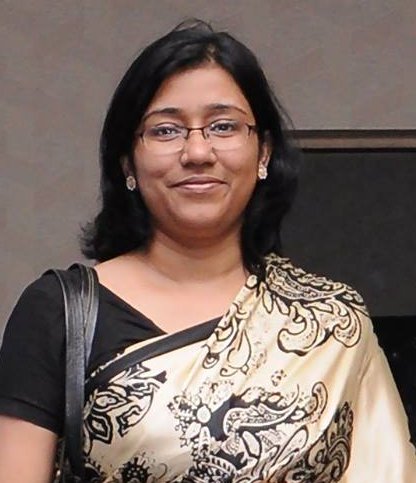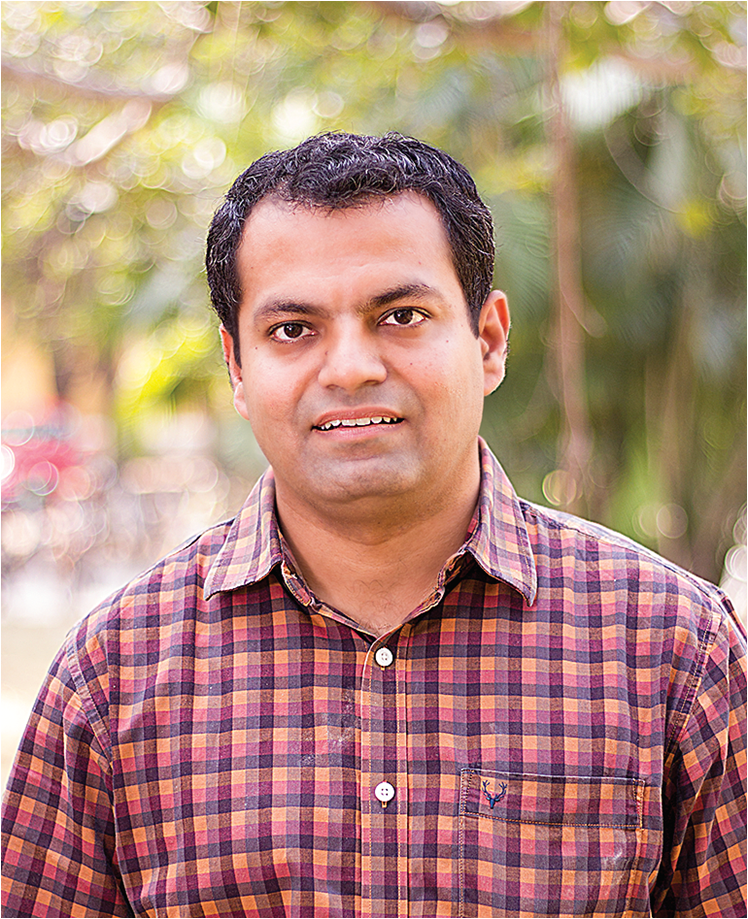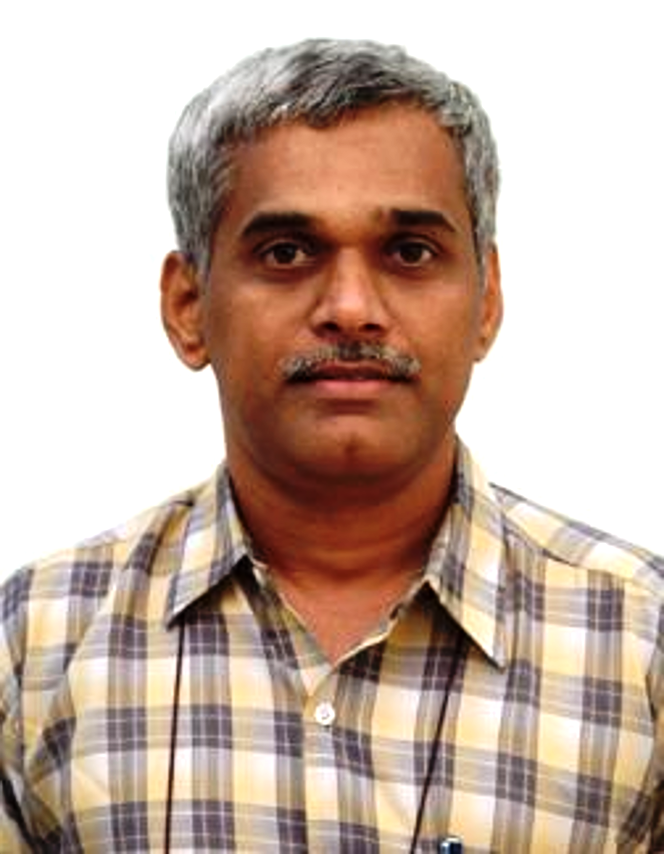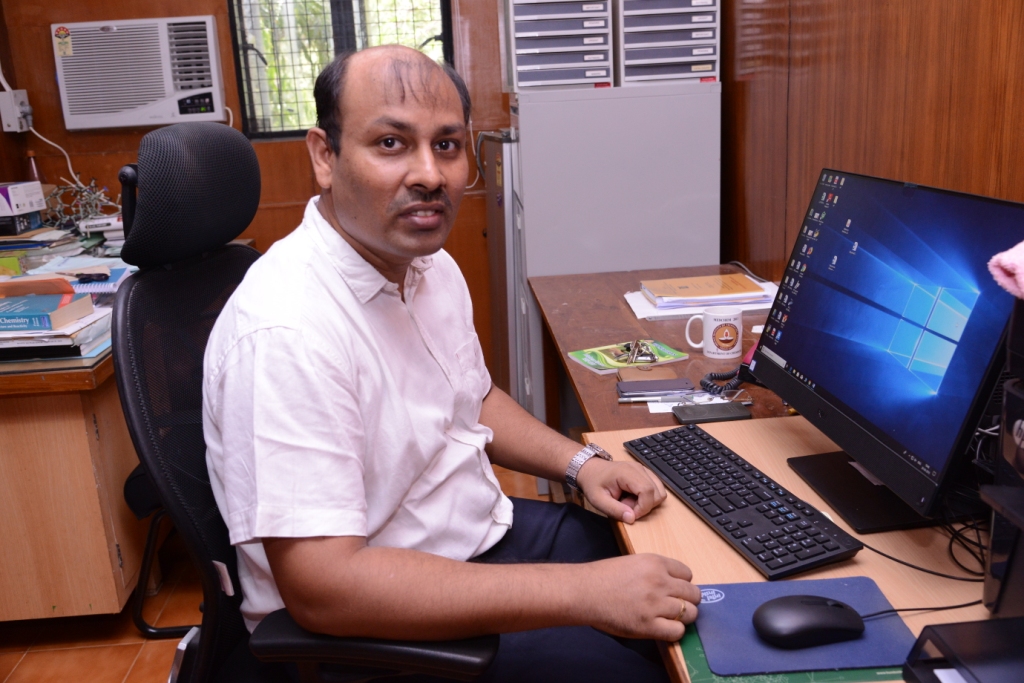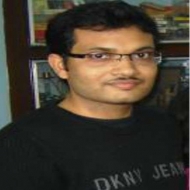Project
Carbon, in its various nanostructural forms such as graphene, carbon nanotube, carbon dots, graphene dots, nanorods etc, has shown immense potential in applications like sensing, lighting, bioimaging, mechanical strengthening and various other fields, primarily at a research level. Carbon nanostructures in optoelectronics is an emerging field which can possibly surpass the current materials systems like organic semiconductors, in certain aspects like biocompatibility, low toxicity, photostability, low-cost synthesis and versatility. A lot more has to be done in terms of optimization and full utilization, though the basic capability of the carbon nanoforms as candidate materials for optoelectronic devices has been established.
The center will commence with fabrication of state-of-the-art carbon dot light emitting diodes (CD-LED). Though, there is a lot of ongoing work in the topic, globally, the individual groups typically focus on isolated aspects like synthesis, surface functionalization or novel applications. We propose to work on all the components of the LED, comprising of the carbon dot (CD) emissive layer, contact materials, device structure and encapsulation to achieve the best performance. For device designing, we will incorporate concepts from organic LED devices, to design high efficiency CD-LEDs. Current OLED rely on phosphorescence for red and green and fluorescence for blue. Next generation high efficiency emitters are TADF (thermally activated delayed fluorescence) materials for which the triplet population too contributes to the emission. However, these materials have low colour purity due to their very broad emission spectrum. There is also a lack of blue emitters in TADF materials. Recently, very narrow blue emission has been demonstrated in CDs, just by surface treatment of the dots. At the same time, the scope for controlling the features of the emission spectrum of CDs and the feasibility of functionalization render them as very attractive media for the design of multicoloured and white light emitters as well. Thus, CDs offer a lot of scope of research and improvement, suitable to be the future of LED technology. In addition, a proper delineation of the physical mechanisms of emission processes is a frontier topic of ongoing research with several unexplored issues of basic Physics, an active topic of the PI’s current research.
Besides working towards CD-LED with high efficiency and colour purity fabricated on ITO substrates, the next challenge that will be addressed is design and fabrication of all-carbon LEDs. Graphene-based multifunctional electrodes and interconnects will be used. This will require optimization of the properties of graphene, typically functionalized graphene oxide, for mechanical strength, electrical conductivity, optical transparency and work function. There has been an extensive ongoing research by the team on crack propagation in these films and how that affects their electrical conductivity through investigation of their electromechanical properties. The team has also extensively worked on confined water diffusion through functionalized graphene. One objective of Phase-1 will be to impart multifunctionality to the graphene-based layer, where it serves as flexible transparent electrode for the CD-LED as well as serve as water diffusion barrier. This proposal will, therefore, lead to technological advancements in three frontiers for optoelectronic applications, notably,
- i) Synthesis of high luminescence CDs with desired emission wavelength and colour purity
- ii) Development of graphene-based interconnects and electrodes for flexible optoelectronics, including multifunctionality of serving as a humidity-protective coating. The team has been already working on synthesis and investigation of optical properties of CDs, flexible graphene inter-connects and graphene synthesis.
Apart from working towards technological advancement, this proposal also offers scope for fundamental studies of luminescence properties of the CDs which is of current interest for physics, chemistry, material science and biotechnology departments across the globe. The physics behind the optical properties of CDs, the role of surface states and functional moieties, the extent of quantum confinement effects and other possible, mechanisms behind the emission spectrum and the cause of large Stokes shift observed in these systems hold a lot of controversies. It is essential to have a clear understanding of the sources of emission and carrier dynamics within the system to implement means to enhance emission and narrow the bandwidth. This will form an integral part of the physics investigated in this proposal. Standard spectroscopy like absorption, photoluminescence and electroluminescence will be performed to characterize the emission properties of the CDs. There has been reports about multi-emission from these dots in red and blue depending on humidity, solvent etc. The presence of different sources of emission within the dots requires extensive investigation of the carrier dynamics to improve the emissive properties of the dots, in terms of intensity and colour purity. To understand the origin of the PL and how it is related to the generation of the carriers, time resolved PL measurements will be done. The current proposal is envisaged as the beginning of laying down a platform for international and national collaborations, working towards eco-friendly, industry viable, carbon-based optoelectronics. Two of the investigators have past and ongoing collaborations with scientists in Singapore.
Expected deliverables of the research
Phase I
- Optimization of synthesis and functionalization of carbon dots to obtain high emission efficiencies and RBG colour purity.
- Fabrication of graphene based electrical interconnects and electrodes for optoelectronics applications, including development of multifunctional graphene layers encapsulation against humidity degradation for optoelectronics
- Investigation of optical properties of the CDs for sensing applications.
Phase II
- Design and fabrication of carbon-dot-based emitters with state-of-the art efficiencies
- Design, fabrication and characterization of all-carbon emitters on flexible substrates with carbon dots as active emitters, graphene-based contacts and interconnects and graphene encapsulation.
- Investigation of carbon nanostructures for other diverse applications.
Current status
Collaborations
International Collaborations
Prof. Sow Chorng-Haur (Head of Department of Physics, NUS, Singapore) link
Prof. Harald Schneider, Head spectroscopy group, HZDR, Germany link
Industrial collaborations
- Tata Steel (TSAMRC)
External international site links
International education programs
- An online international workshop will be organized at the end of Phase I (tentatively by end of 2021)
Societal impact
- Phase I
which deals with development of the individual components for the CD-LED, will lead to skill development from academic and industrial font. Students will be trained and technology shared across collaborating groups. At this level, since various techniques employed are applicable for other technologies as well, the center will create man-power and skill sets for the lighting industry in India.
- Phase II
will see the design and fabrication of CD-LEDs and all-carbon LEDs which has advantage over other semiconductor-based LEDs on being new eco-friendly class of materials for lighting technology. Not only this will draw interest from researchers but will draw attention from industries. There is a possibility for the CD-LEDs to be scaled up and projected to industrial scales, requiring further research. That will generate technology which will lead to jobs and start-ups.
Sustenance statement
Carbon nanostructures have showed a lot of potential in various fields of optoelectronics consisting of emitters and detectors, sensors and have found applications in biology for imaging and analytical sensors. The proposed center will be a platform to initiate laboratory level investigation of carbon nanomaterials typically carbon dots and graphene, and advance it to technological advancement towards carbon-based optoelectronics. Beyond phase II, the know-how and facility can be expanded to the following fields:
- Other applications like photo-detectors, sensors and protective coatings where the multifunctional graphene layers can be used.
- There is a possibility of establishing industry collaborations for commercialization of the CD-based LEDs
- In biology, CDs have been found suitable for bioimaging, though the research is in an early stage and not commercialized. We intend to collaborate with researchers in biology and explore the field of carbon-based biosensors and imaging.
- Novel applications using carbon-based materials will be experimented on.
- This CoE will be the beginning of a national and international collaboration, which will initiate and nurture exploration of carbon nanomaterials and their devices. Scopes in this field are immense with new materials and applications discovered every so often.
Technical/ Scientific Progress
New work done in the project
Synthesis and purification of carbon dots (CDs): We have synthesized CDs emitting in UV, blue and green. Using measurements like PLE, FTIR spectroscopy, we investigated the origin of these various emissions. Investigation of UV emitting carbon dots, Dinesh Kumar S, C Vijayan, Jayeeta Bhattacharyya – Poster presentation (Best poster award) at ICTN-KLC 2021
Preparation of thin films: To use these CDs in devices, emissive properties of these CDs in solid thin films need to be optimized. We have prepared thin films with bare CDs and CDs in various matrices, and studies their emission.
Study of re-absorption in solution (manuscript under preparation): We have developed a technique to investigate re-absorption in these CDs.
We have worked on the effect of humidity & intercalated water on the performance of flexible rGO films. The following publication is related to one of the CoE objectives and financial support from CoE (consumables & contingency) has been acknowledged:
- Lavudya Devendar, MR Shijeesh, T. Sakorikar, KL Ganapathi and Manu Jaiswal, Intercalated water mediated electromechanical response of graphene oxide films on flexible substrates Journal of Physics: Condensed Matter, 34, 025001, 2022
Preliminary work titled “Electromechanics of layered graphene films on flexible substrates” was presented as a Poster by Lavudya Devendar in the National Conference on Low Dimensional Materials LDMAT-2021 organized by UM-DAE CEBS, MUMBAI & Material Research Society of India - Mumbai Chapter from June 2-4, 2021.
Detailed work titled “Influence of confined water on the electromechanical response of reduced graphene oxide films on PDMS substrate” by Lavudya Devendar, M R Shijeesh, Tushar Sakorikar, K Lakshmi Ganapathi and Manu Jaiswal was presented as an Oral presentation by Lavudya Devendar at 3rd Indian Materials Conclave and 32nd AGM of MRSI, Dec. 20-23, 2021.
Infrastructure developments
Synthesis and purification (column chromatography) setups for CDs have been established where samples are prepared with desired properties, and effect of fabrication parameters on their optical properties investigated.
The procurement of humidity dependent gravimetric set-up is in progress and which will allow more extensive studies on the multifunctional properties of graphene oxide, in continuation with the works presented above. PO for benchtop vapor sorption analyzer has been sent.
Spin coater tendering has been done.
GTE for TCSPC system is under process.
Output
“Intercalated water mediated electromechanical response of graphene oxide films on flexible substrates”, Lavudya Devendar, MR Shijeesh, T. Sakorikar, KL Ganapathi and Manu Jaiswal, Journal of Physics: Condensed Matter, 34, 025001, 2022
“Electromechanics of layered graphene films on flexible substrates” was presented as a Poster by Lavudya Devendar in the National Conference on Low Dimensional Materials LDMAT-2021 organized by UM-DAE CEBS, MUMBAI & Material Research Society of India - Mumbai Chapter from June 2-4, 2021.
“Influence of confined water on the electromechanical response of reduced graphene oxide films on PDMS substrate” by Lavudya Devendar, M R Shijeesh, Tushar Sakorikar, K Lakshmi Ganapathi and Manu Jaiswal was presented as an Oral presentation by Lavudya Devendar at 3rd Indian Materials Conclave and 32nd AGM of MRSI, Dec. 20-23, 2021.
Investigation of UV emitting carbon dots, Dinesh Kumar S, C Vijayan, Jayeeta Bhattacharyya – Poster presentation (Best poster award) at ICTN-KLC 2021
Special seminar “The Little Laser That Could: Focused Laser Beam as a useful Tool for Nanomaterials Research”, by Prof. Sow Chorng Haur, Head of the Department of Physics, NUS, Singapore.
Special seminar “Absorption and Emission of Lights in Carbogenic Nano Dots”, by Prof. Chayan K. Nandi, School of Basic Sciences, IIT Mandi.
Mobility
Visits planned for PI, co-PIs, international collaborators and students (both inbound and outbound)
Mr. Dinesh Kumar (Student of PI), plan to visit NUS to work in laboratory of collaborator, Prof. Sow Chorng Haur. Discussion under progress, regarding covid regulations and possible schedule.

